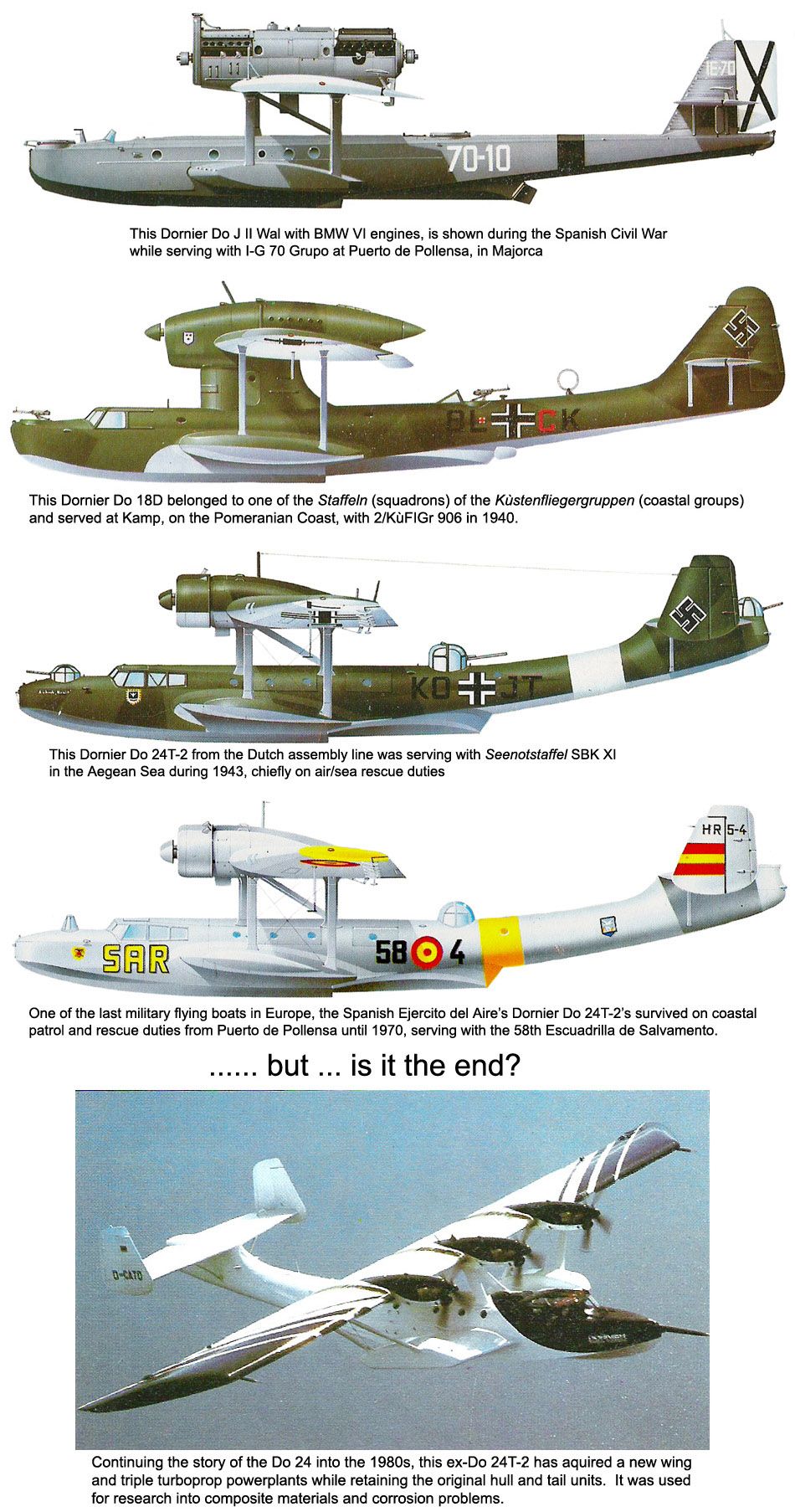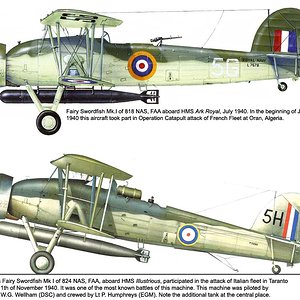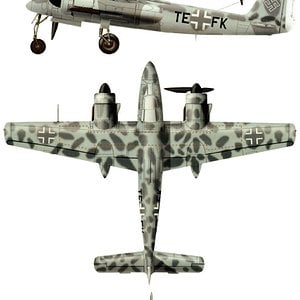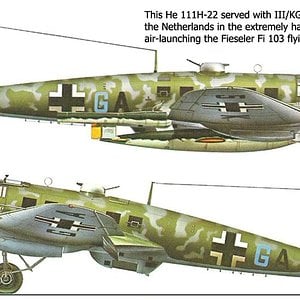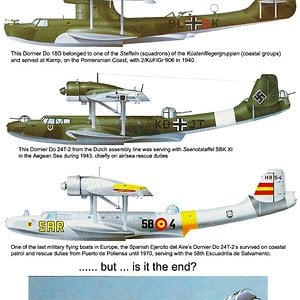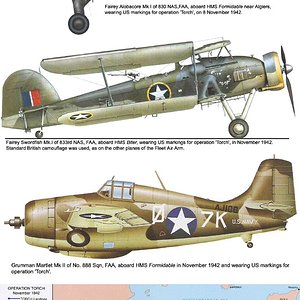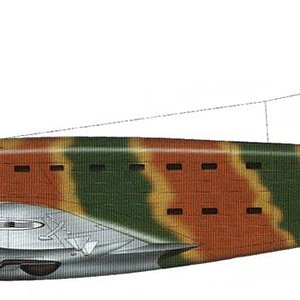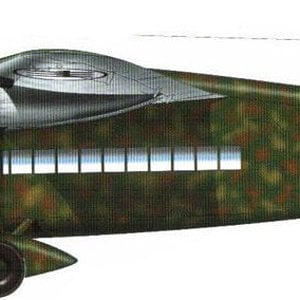Navigation
Install the app
How to install the app on iOS
Follow along with the video below to see how to install our site as a web app on your home screen.
Note: This feature may not be available in some browsers.
More options
You are using an out of date browser. It may not display this or other websites correctly.
You should upgrade or use an alternative browser.
You should upgrade or use an alternative browser.
Professor Dr Claude Dornier decided to improve his Gs II flying boats, and after development it was redesignated Type J, and named Wal (Walrus). The prototype flew on 6 November 1922. The Wal was ideally suited for both commercial and military operations for the next 15 years.
The Dornier Do 18 was the natural successor to the Wal, designed in early 1934. By the start of World War II the Do 18 was obsolete but stayed in production for the Luftwaffe up to end 1940 due to the delay in development of the Blohm und Voss Bv 138. A Dornier Do 18D was the first aircraft shot down by the British forces, on 26 September 1939 being shot down by a Blackburn Skua from HMS Ark Royal.
In 1935, MLD (Dutch Naval Air Force) approached Dornier for a successor to the Do 18. Dornier submitted a 3-engine development of the Do 18, called the Do 24. The Dutch government paid the design fees as well as license building fees. In the autumn of 1937 production started on 60 Do 24K's for the MLD. During the invasion of the Netherlands, the Germans captured three of these boats and after testing by the Luftwaffe, realizing the exellence of these boats, production was quickley re-instated in the Netherlands. Used mainly for air/sea rescue, coastal patrol and ambulance duties, these magnificent machines worked hard throughout the whole of World War II. The last military Do 24's in Europe, Do 24T-2's serving with Spain, was phased out in 1970.
Was it the end of the line?? See the bottom picture of the examples shown!
The superb rough-water seaworthiness of the Dornier Do 24 has never been equalled by any other aircraft of any size.
Source: Great Aircraft of the World.
Published by Colour Library Books.
The Dornier Do 18 was the natural successor to the Wal, designed in early 1934. By the start of World War II the Do 18 was obsolete but stayed in production for the Luftwaffe up to end 1940 due to the delay in development of the Blohm und Voss Bv 138. A Dornier Do 18D was the first aircraft shot down by the British forces, on 26 September 1939 being shot down by a Blackburn Skua from HMS Ark Royal.
In 1935, MLD (Dutch Naval Air Force) approached Dornier for a successor to the Do 18. Dornier submitted a 3-engine development of the Do 18, called the Do 24. The Dutch government paid the design fees as well as license building fees. In the autumn of 1937 production started on 60 Do 24K's for the MLD. During the invasion of the Netherlands, the Germans captured three of these boats and after testing by the Luftwaffe, realizing the exellence of these boats, production was quickley re-instated in the Netherlands. Used mainly for air/sea rescue, coastal patrol and ambulance duties, these magnificent machines worked hard throughout the whole of World War II. The last military Do 24's in Europe, Do 24T-2's serving with Spain, was phased out in 1970.
Was it the end of the line?? See the bottom picture of the examples shown!
The superb rough-water seaworthiness of the Dornier Do 24 has never been equalled by any other aircraft of any size.
Source: Great Aircraft of the World.
Published by Colour Library Books.

